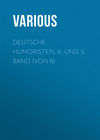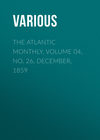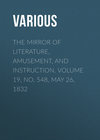Читать книгу: «Notes and Queries, Number 67, February 8, 1851», страница 4
Minor Queries
The "Tanthony."—When the porteress at the principal entrance to Kimbolton Park opens the gates for the admission of a visitor, she rings a bell to give warning to the servants at the castle of his approach. This bell is popularly called the "Tanthony," in reference, I presume, to some legend of Saint Anthony. Will one of your readers be good enough to enlighten me?
Arun.
"Beauty Retire."—Will the noble editor of Pepys's Diary permit me to ask him whether he has seen, in the Pepysian library, or elsewhere, a copy, either in print or MS., of Pepys's song, "Beauty Retire," words and music; or is it to be found in any miscellaneous collection of songs?
I. H. M.
The Soul's Dark Cottage.—Being called on to reply to matters as plain as those to which I replied last week, I am less reluctant to acknowledge my own ignorance or obliviousness, respecting a couplet of which, I doubt not, hundreds of your readers know the original habitat, but which cannot be recalled to my own memory, nor to that of several friends to whom I have referred. The couplet is—
"The soul's dark cottage, battered and decayed,
Lets in new light through chinks that time hath made."
Effaress.
London, Jan. 4, 1851.
"Small by degrees and beautifully less."—This is a very common quotation, but, although I have made frequent inquiries, I have never yet been able to find out the author of it. Perhaps some of your readers can inform me.
W. H. B.
Musical Plagiarism.—I think I remember to have heard, two or three years ago, of an action for damages brought against an eminent composer, on account of plagiarism in a musical composition; and that the defendant's argument was founded on the fact, that there exist very few really "original compositions," if originality excludes every form of plagiarism. And he adduced as examples the "See the conquering hero," of Handel; and the "Zitti Zitti," of Rossini. Can any of your readers refer me to the minutes of this trial; and tell me if any book has been published in criticism of the originality of composers?
R. M.
Simon Bache.—In the parish church of Knebworth, Herts, is the brass of a priest, with the following inscription:—
"Hic jacet Dominus Simo Bache, Clericus, quondam Thesaurarius Hospitii illustrissimi Principis Domini Henrici Quinti Regis Angliæ, ac Canonic. Ecclesiæ Cathedralis Sancti Paulli, London; qui obiit xix. die Maii. Anno Dom. nostr. 1414."
Can any of your readers inform me what this office of Thesaurarius Hospitii was; also, who Simon Bache was that held it; and how it happens that he is buried at Knebworth?
A. W. H.
Sir Walter Raleigh.—In speaking of the difficulty which exists in obtaining a perfect knowledge of any event, reference is often made to Sir Walter Raleigh having witnessed an occurrence, while confined in the Tower, and that two witnesses gave such a different account from each other as well as from himself, that he threw his MS. history into the fire. In what contemporary work is this recorded?
A similar discrepancy in evidence is mentioned with reference to the celebrated tourney at Tiani, in 1502, in Prescott's Ferdinand and Isabella, vol. iii. p. 45.
H. J.
Harrison's Chronology.—William Harrison, a native of London, chaplain to Sir William Brooke, Baron Cobham, Lord Warden of the Cinque Ports, composed a Description of Britain and of England; and likewise translated Hector Boethius's Description of Scotland, from the Scottish version of John Bellenden. Both these pieces are printed in Holinshed's Chronicles, 2 vols. fol. 1587. In the prefaces Harrison speaks of a work on Chronology, "which I have yet in hand." Has that work ever been printed? I discovered the manuscript of it last year, in the Diocesan Library of Derry, in Ireland; but did not ascertain who was its author (though it bears the name of Harrison), until a few days ago.
H. Cotton.
Thurles, Ireland, Dec. 21. 1850.
Aristophanes on the Modern Stage.—Can any of your valuable correspondents inform me whether any of the plays of Aristophanes have been produced upon the stage in a modern version; and if so, when, and by whom?
I am inclined to think that some at least of the comedies in the hands of a skilful author might be made entertaining and popular.
The Acharnians and Peace, or perhaps even the Birds, might form the groundwork of an amusing piece. Should you be able to spare a corner in your valuable periodical for this Query, you would greatly oblige
C. J. R. (2.)
Burton Crescent.
Drachmarus.—Can any of your readers kindly inform me, under what name "Drachmarus," one of the Schoolmen, is commonly known?
J. Sansom.
Strutt's Queen Hoo Hall.—Some years back I purchased of a son of the late Joseph Strutt, a copy of Queen Hoo Hall, containing manuscript memoranda by that son relating to his father and to Walter Scott. Amongst other matters it states, that the original manuscript of that romance was submitted to Mr. Scott before it was published, and that he retained it a long time before he published his Waverley Novels. Mr. Strutt, jun., accuses him of taking hints and facts from his parent's work. He also stated that the story of the Illuminator in Queen Hoo Hall is mainly an account of the life of his father. The three volumes I gave to my friend and patron, Mr. John Broadly, whose very fine and choice library was sold by auction after his death, with the copy of the work referred to. I am desirous of ascertaining in whose possession these volumes are? I have a beautiful miniature portrait of Joseph Strutt.
J. Britton.
17. Burton Street, Jan. 21. 1851.
Cardinal's Monument.—Passing into the church of St. Saviour, Southwark, yesterday by the centre door on the south, I observed on a pillar to the right, a sculpture of a cardinal's hat with the usual cord and tassels properly coloured, beneath which was a coat of arms, quartering alternately three lions and three fleur-de-lis. There is no name or date upon it. It would be interesting to know to whom it refers.
J. D. A.
Names Bacon and Fagan.—The very curious and interesting information which has come to light in the replies to my Query about the origin of the patronymic Bacon, emboldens me to put another question upon the subject.
I have long suspected, but have been unable to prove, that the names Bacon and Fagan were originally one and the same. Bacon, it appears, is a Saxon word, meaning "of the beech tree." Fagan, I presume, is as undoubtedly from the Latin "de fago," "of the beech tree."
The approximation of sound in these names is sufficiently evident. That the letters C and G have been commonly convertible between the Latin and Saxon is without doubt. Query: Have B and F been at all used convertibly? Or can any of your readers, by any other means, strengthen the probability, or prove the truth, of my conjecture?
Nocab.
Blunder.—What is the origin of this word? In Woolston's First Discourse on Miracles (Lond. 1729), at p 28., I find this passage:—
"In another place he intimates what are meant by oxen and sheep, viz., the literal sense of the Scriptures. And if the literal sense be irrational and nonsensical, the metaphor we must allow to be proper, inasmuch as nowadays dull and foolish and absurd stuff we call Bulls, Fatlings, and Blunders."
This would seem to imply that in Woolston's days blunder was the name of some animal; but in no dictionary have I been able to find such a signification attributed to it. The Germans use the words bock and pudel in the same sense as our word blunder.
C. W. G.
Prince of Wales' Feathers.—The establishment of "De Navorscher" is a matter of great importance to all students of our early history, and the liberal mention of its projectors, to bring under the notice of their countrymen all Queries likely to be answered by them, is one calculated to clear up many obscure points in our early history. Sir H. Nicolas concludes his valuable papers on the Badge and Mottoes of the Prince of Wales (Archæologia, vol. xxxi. p. 372.) by expressing his belief that both the former, namely, the Feathers, and the mottoes, "Ich Dien" and "Houmout," were derived from the House of Hainault, possibly from the Comté of Ostrevant, which formed the appanage of the eldest sons of the Counts of that province. Perhaps I may be allowed, through your columns, to invite the attention of the correspondents of "De Navorscher" to this point.
Effessa.
Portrait of Ben Jonson.—Ritson, the well-known antiquary, possessed an original painting of Ben Jonson. It was afterwards purchased by W. Fillingham, Esq., of the Inner Temple, a gentleman well known for his love of the early drama; and whilst in his possession it was engraved by Ridley in 8vo. What has become of the painting? Can any of your readers point out its locality at the present time?
Edward F. Rimbault.
Robert Burton, otherwise Democritus Junior, the author of that glorious book The Anatomy of Melancholy, is stated by Wood to have been born at Lindley, in Leicestershire. Plot, however, in his Natural History of Staffordshire, 1686, p.276., gives the place of his birth, Fald, in the latter county; and, furthermore, says he was shown the very house of his nativity. Can any of your correspondents throw any light upon this subject?
Edward F. Rimbault.
Blowen, Origin of the Name.—You have fallen into a very general error in spelling my name (pp. 71. 76.) with the terminal r, "Blower," instead of "Blowen." Perhaps some one of your genealogical readers can inform me of the origin and descendants of the family with this scarce name, thus spelt, "Blowen." Are we a branch of the Blowers (as you appear to think we must be), that useful family of alarmists, whose services in early times were so necessary? or are we the descendants of the Flanders "Boleyns," Anglicanized "Bloyen?"
Query, Did Anna Boleyn, wife of Henry VIII., ever spell her name so? I need not to be reminded that some lexicographers define "Blowen" to be a rude woman. Query, origin of that appellation, so used?
We have been citizens and liverymen of London from Richard Blowen, who married, at the close of the seventeenth century, the sister of Dr. Hugh Boulter (who became chaplain to George I., and afterwards Lord Archbishop of Armagh).
Blowen.
Покупайте книги и получайте бонусы в Литрес, Читай-городе и Буквоеде.
Участвовать в бонусной программе




















